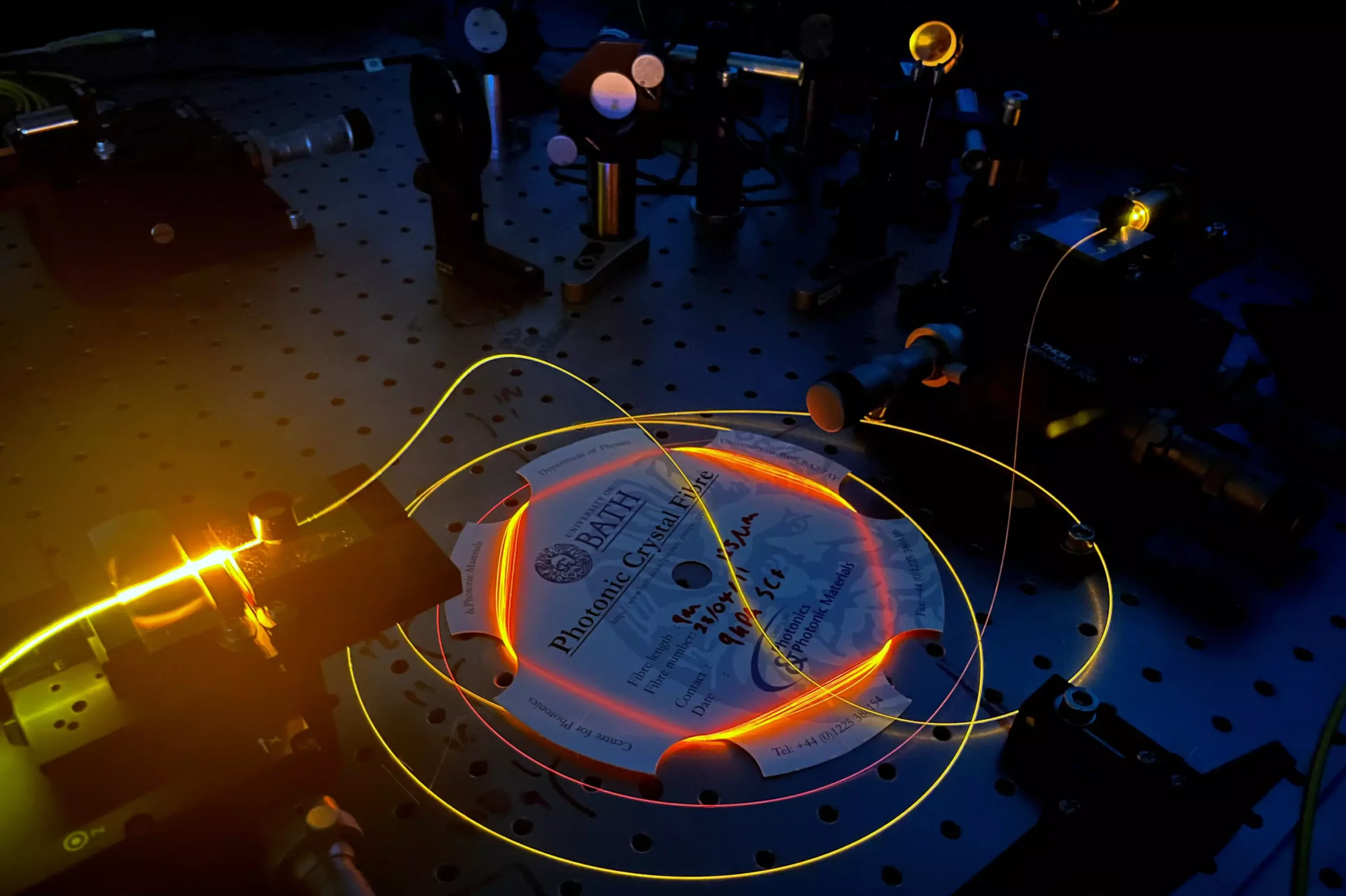Quantum computing stands on the precipice of transforming our world, promising breakthroughs that seem to belong to the realm of science fiction. From solving intricate problems in seconds to developing ground-breaking medical therapies and establishing unbreakable communication channels, the opportunities are immense. However, this leap into a new computational paradigm comes with challenges, particularly in how we transmit data. Traditional optical fibers, while effective for current telecommunications, are proving inadequate for the nuances of quantum data transfer. Researchers at the University of Bath have emerged as pioneers in the quest to create specialty optical fibers that address these specific needs.
Redefining Optical Fiber Technology
At the core of this innovation are optical fibers that diverge from the conventional silica glass model. These newly engineered fibers feature a micro-structured core composed of intricate patterns of air pockets along their length. This design not only enhances the transmission capabilities but also aligns with the operational requirements of quantum technologies. Dr. Kristina Rusimova and her team highlight the shortcomings of existing fibers, stating that the wavelengths catered to by regular cables are incompatible with those required for cutting-edge quantum components. This mismatch could stifle the uptake of quantum technologies if unaddressed.
Quantum Properties of Light: The Game Changer
Light, particularly in the form of photons, serves as a foundational element for quantum computing. The unique properties of individual photons allow them to embody principles like quantum entanglement. This phenomenon enables photons to influence each other instantaneously over distances, unlike classical bits confined to one state or the other. Essentially, photons can embody the superposition state, representing both one and zero simultaneously, thereby unlocking astonishing computational capabilities. Dr. Cameron McGarry aptly asserts that establishing a dedicated quantum internet is crucial in realizing the transformative prospects of these technologies.
From Conventional to Quantum Networks
The concept of a quantum internet bears resemblance to our current infrastructure but demands a complete overhaul of the underlying technologies, particularly optical fibers. Researchers at Bath are pioneering designs that cater to the quantum landscape, discussing how existing infrastructures must adapt. They propose solutions for long-distance communication and emphasize specialty fibers capable of incorporating quantum repeaters—devices that extend the range of quantum signals through the network. These innovations promise not only robust network connectivity but also the potential for performing quantum computations directly at network nodes.
Potential Impact on Quantum Computing
The implications of these advanced fibers extend beyond mere connectivity. They serve as potential sources for entangled single photons, quantum wavelength manipulators, low-loss switches, and even reservoirs for quantum memory. The ability to operate on multiple quantum states opens doors to new methods of message encryption, advanced sensing technologies, and further innovation in quantum computing. Indeed, Dr. Alex Davis points out that the capacity of fibers to confine and transmit light over vast distances is what underpins their utility, enabling the unfurling of exotic quantum states critical for the future of technology.
Global Advancements and Future Prospects
This research is not merely an isolated endeavor; it reflects a global movement toward elevating optical fiber technology within the quantum domain. Experts from around the world are investing time and resources into understanding how microstructured fibers can enhance not only telecommunications but also the practical usability of quantum systems. The insights shared by Dr. Kerrianne Harrington serve as a beacon of the exciting advances in fiber technology. The collaborative spirit underlying this research is vital as we navigate the complexities of developing a robust quantum infrastructure.
The Road Ahead: Challenges and Opportunities
While the concept of quantum advantage—the ability to outperform classical computers—remains unproven, the challenges recognized in the research represent fertile ground for ongoing exploration. Addressing these hurdles becomes an avenue for innovation and inquiry, driving the science community ever closer to realizing the promise of quantum computing. The optical fibers conceived at Bath are positioned to be the bedrock upon which the future of quantum data transmission rests. As researchers, including notable figures like Dr. Peter Mosely, continue to push the boundaries of this field, we edge closer to a world where quantum computing is not just an aspiration but a practical reality.


Leave a Reply